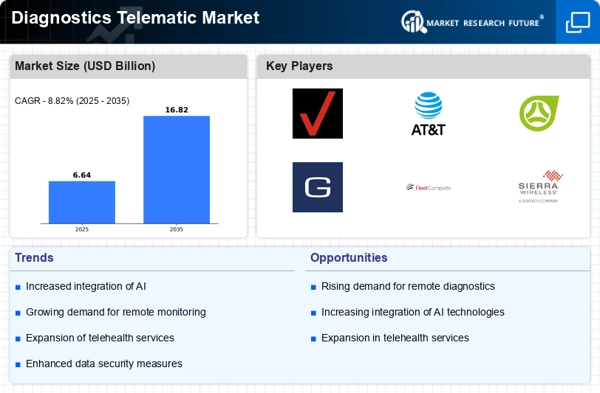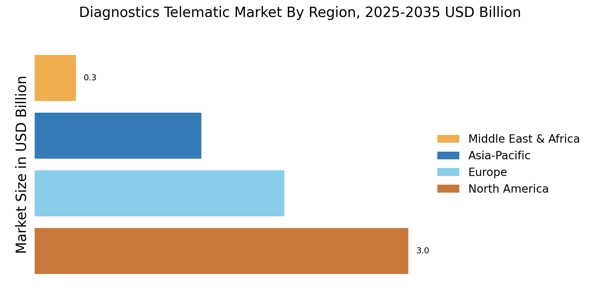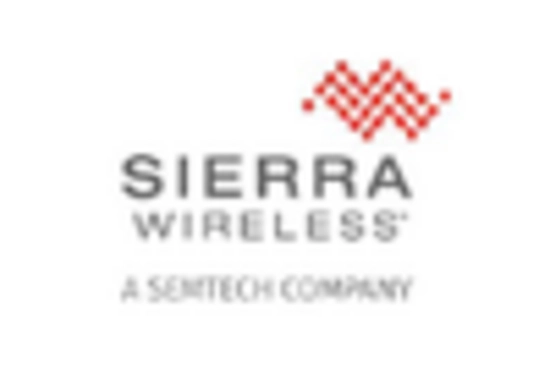Rising Demand for Real-Time Data
The Diagnostics Telematic Market is experiencing a notable increase in demand for real-time data analytics. This trend is driven by the need for immediate insights into vehicle performance and health. As consumers and businesses alike seek to optimize operational efficiency, the ability to access and analyze data in real-time becomes paramount. According to recent statistics, the market for telematics solutions is projected to grow at a compound annual growth rate of approximately 20% over the next five years. This growth is indicative of a broader shift towards data-driven decision-making in the automotive sector, where timely information can lead to improved maintenance schedules and reduced downtime.
Advancements in Connectivity Technologies
The Diagnostics Telematic Market is being propelled by advancements in connectivity technologies. The proliferation of 5G networks and the Internet of Things (IoT) is facilitating seamless communication between vehicles and external systems. This enhanced connectivity enables the collection and transmission of vast amounts of diagnostic data, leading to improved vehicle performance and safety. As manufacturers increasingly adopt these technologies, the market is likely to experience accelerated growth. The integration of advanced connectivity solutions is expected to enhance the capabilities of telematics systems, making them more attractive to consumers and businesses alike.
Regulatory Compliance and Safety Standards
The Diagnostics Telematic Market is significantly influenced by stringent regulatory compliance and safety standards. Governments across various regions are implementing regulations that mandate the use of telematics systems to enhance vehicle safety and reduce emissions. For instance, the introduction of regulations requiring advanced driver assistance systems (ADAS) has propelled the adoption of telematics solutions. This regulatory landscape not only fosters innovation but also compels manufacturers to integrate sophisticated diagnostics capabilities into their vehicles. As a result, the market is likely to witness a surge in demand for telematics solutions that ensure compliance with evolving safety standards.
Increased Focus on Fleet Management Solutions
The Diagnostics Telematic Market is witnessing a surge in the adoption of fleet management solutions. Businesses are increasingly recognizing the value of telematics in optimizing fleet operations, reducing costs, and enhancing productivity. The integration of diagnostics telematics allows fleet managers to monitor vehicle health, track maintenance schedules, and analyze driver behavior. Recent data indicates that the fleet management segment is expected to account for a substantial share of the telematics market, with projections suggesting a growth rate of around 15% annually. This trend underscores the importance of telematics in driving operational efficiencies within the transportation sector.
Growing Consumer Awareness and Demand for Vehicle Health Monitoring
The Diagnostics Telematic Market is benefiting from a growing consumer awareness regarding vehicle health monitoring. As individuals become more informed about the importance of regular vehicle maintenance and diagnostics, the demand for telematics solutions that provide real-time health updates is on the rise. This trend is particularly evident among tech-savvy consumers who seek to leverage technology for enhanced vehicle performance. Market Research Future indicates that the consumer segment for diagnostics telematics is projected to grow significantly, driven by the increasing availability of user-friendly applications and platforms that facilitate vehicle monitoring.


















Leave a Comment